The Generate components allow users to subdivide panels recursively and create attractor/target relationships.
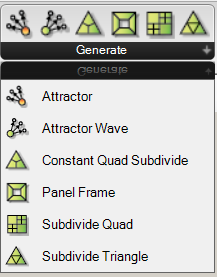
Description
Appearance
Attractor
Measures the distance between an Attractor point or list of points and a series of Target points, and generates values within the given domain relative to the distance. Also returns vectors and a list of distances.
Input:
- A list of points for the Attractors.
- A list of points to become Targets.
- A domain to apply to the values.
Returns:
- The component assigns Values within the specified domain related to the distance between the Attractor point and each Target point.
- A list of vectors between the Attractor point and Target point
- A numerical list of the Distances between the Attractor point and the Target Points
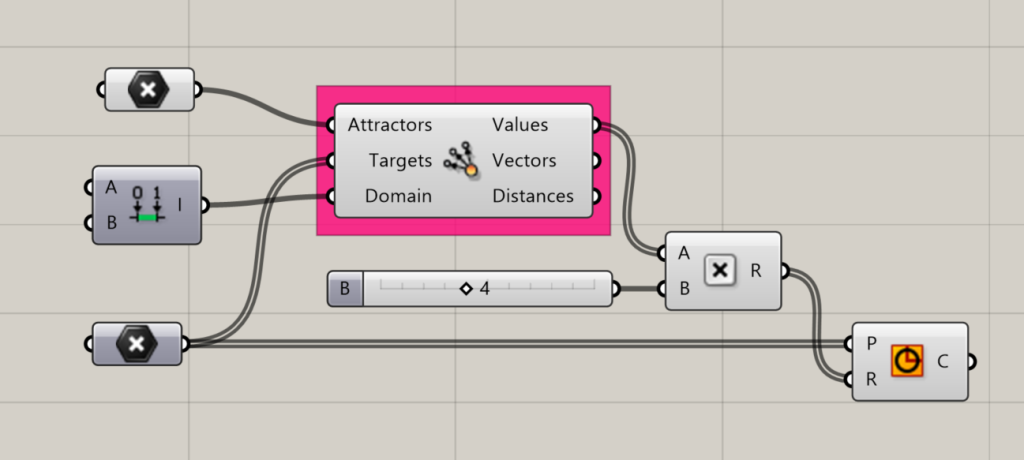
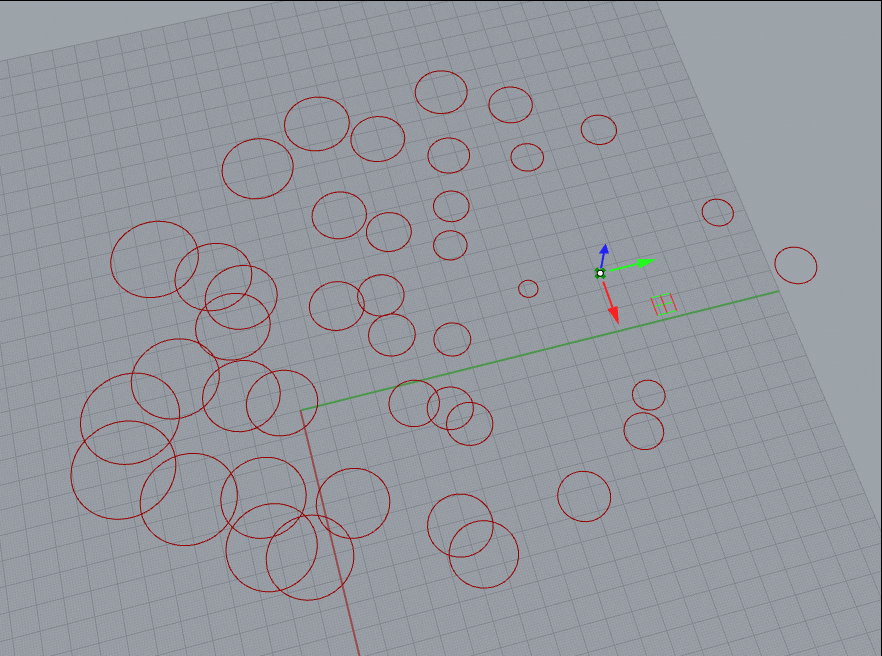
Attractor Wave
Measures the distance between an Attractor point or list of points and a series of Target points, and generates values within the given domain relative to the distance, applying a wave function that creates variation in the results. Also returns vectors and a list of distances.
Input:
- A list of points for the Attractors.
- A list of points to become Targets.
- A domain to apply to the values.
- A frequency for the wave form.
Returns:
- A list of the resulting values.
- A list of vectors between the Attractor point and Target point
- A numerical list of the Distances between the Attractor point and the Target Points


Constant Quad Subdivide
Divides a surface into nested series of three equally sized subdivisions.
Input:
- A list of triangular surfaces. This component was designed to work with Lunchbox’s triangular paneling components.
- The number of times you wish to subdivide the surface into 3 equally sized quadrangles.
- A boolean toggle to set the Recursion type. There are two options available (resulting in “0” and “1” as index numbers), so a boolean toggle is an effective way to toggle between the two styles.
- A boolean toggle to indicate if the results should be created as wireframes or surfaces. To create surfaces, set to false. To create wires, set to true.
Returns: A series of subdivided surfaces.
Tip: Do not set the subdivisions to a high number in your initial setup. In the example to the right, you can see that it exponentially divides!
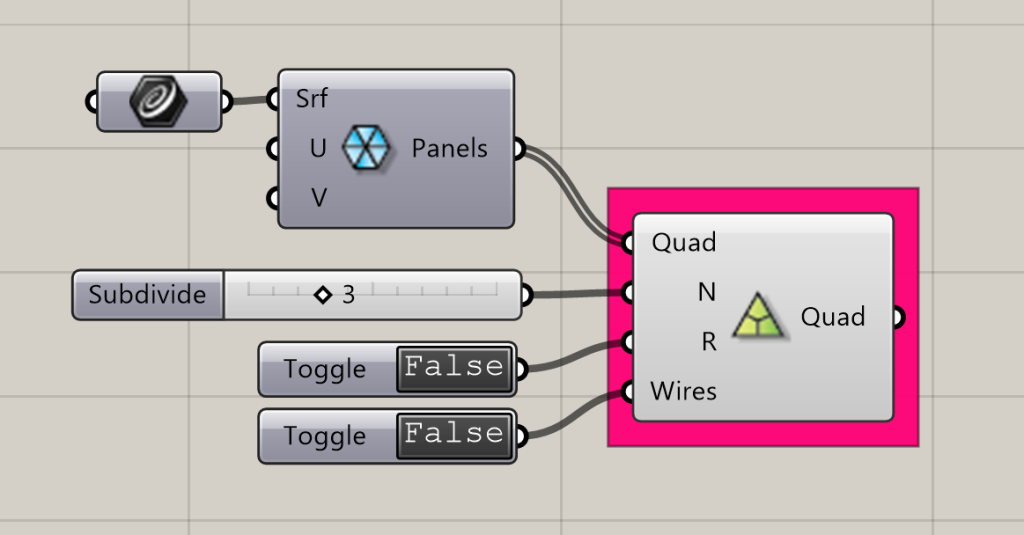
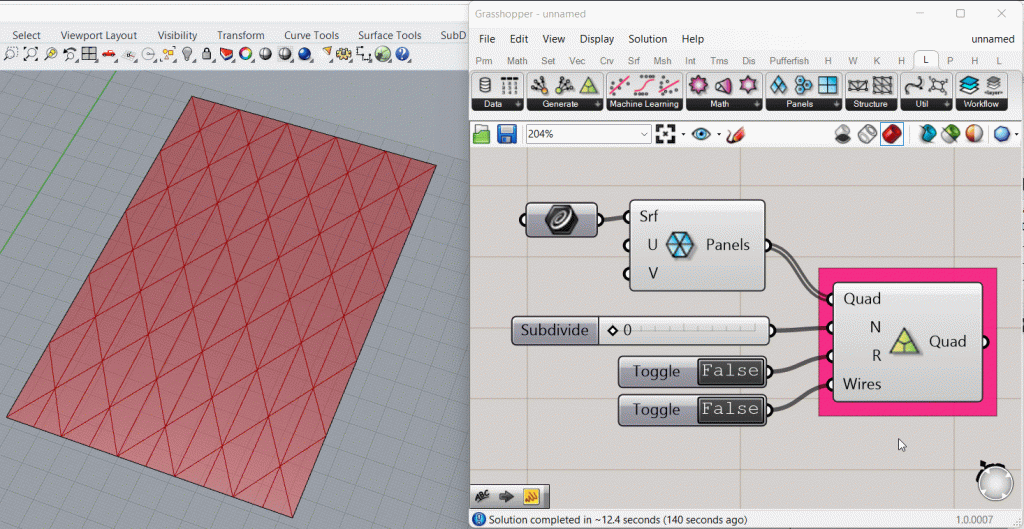
Panel Frame
Creates an offset frame using a panel.
Input:
- A list of panels as planar surfaces
- A scale factor which will set the size of the resulting panel as a proportion of the whole.
- Use a factor <1 to inset the panel
- Use a factor >1 to offset the panel
Returns: A list of Frame surfaces and a List of panel surfaces.


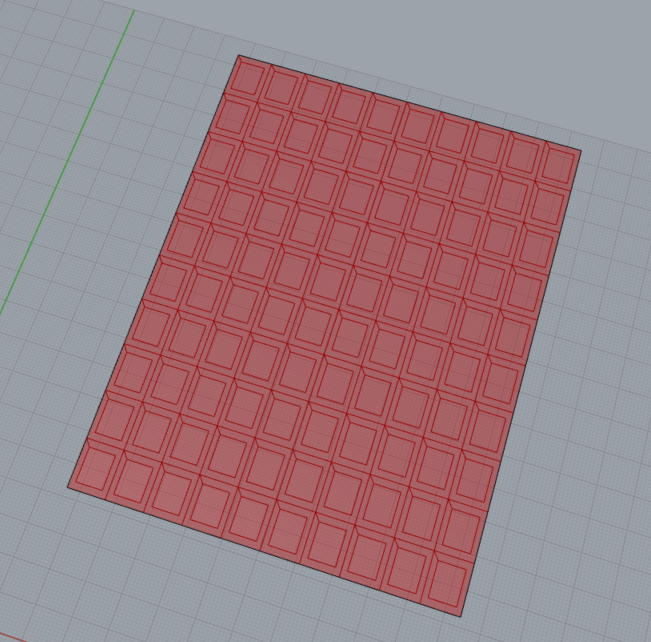
Subdivide Quad
Subdivides a quad into self-similar nested quads
Input:
- A list of quadrangular panels
- The desired number of divisions
- Boolean toggles for the inputs labeled B1-B4. Determines whether a subdivided panel should be subdivided beyond the initial subD.
- A boolean toggle to indicate if the results should be created as wireframes or surfaces. To create surfaces, set to false. To create wires, set to true.
Returns:
- Two lists of subdivided Quadrangles (either surfaces or curves depending on the Wire setting).



Subdivide Triangle
Description text
Input:
- A list of triangular panels
- The desired number of divisions
- Boolean toggles for the inputs labeled B1-B4. Determines whether a the panel should be subdivided beyond the initial subD.
- A boolean toggle to indicate if the results should be created as wireframes or surfaces. To create surfaces, set to false. To create wires, set to true.
Returns:
- Two lists of subdivided Triangles (either surfaces or curves depending on Wire setting).

